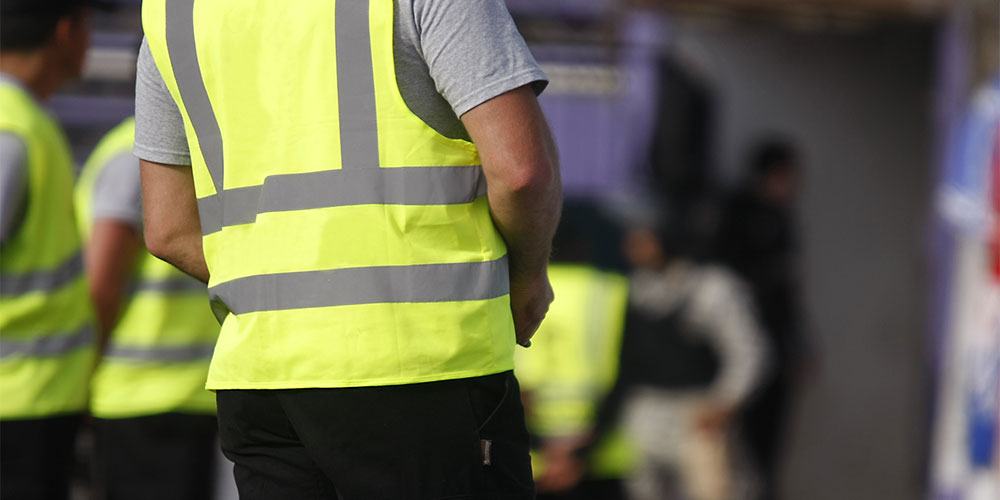[promo_content slug=”pangaro-dec-2020-csos-promo”]
The need for security at any large-scale public event, such as a high school football game, concert, graduation or political rally, must be top-of-mind for any organization. Violence and chaos can and does strike without warning, placing people in potential danger.
Event organizers must ensure they have done everything they can to create a safe and secure environment by conducting a thorough risk analysis and creating an emergency operations plan that considers as many potential threats as possible and prepares an appropriate response for each. This type of assessment is applicable to anywhere people gather in large groups, such as schools, colleges, summer camps and sports camps.
One obvious concern for large gatherings of any kind is the “soft target” nature of the people attending these activities. In the event of a violence-based emergency such as an active shooter, a terror incident, a bomb or an IED attack, organizers must consider how to facilitate emergency responder activities and secure or move a crowd to safety — with protecting life as the priority.
Another major security concern for any large event is communication, especially when there may not be sufficient infrastructure to support it. This concern is also a priority because proper communication between those on the ground at the event and the first responders will be crucial in saving lives during an emergency.
Before the response to violence is considered, an organizer must first prepare their team to create the vision of security they want to have in place on the day of the event. This includes, but is not limited to, the following:
1) Defining the event and the stakeholders: What type of event is it? A high school football game, musical concert, political rally, graduation? Who will be involved (including guests, vendors, dignitaries, law enforcement, medical teams, other facility employees and the media)?
2) Define several perimeters of activity at the event location:
- The larger area surrounding the event location.
- Guest arrival portals, such as vehicular and pedestrian traffic onto the event property, parking, ingress pathways, barricades, and transportation to the security screening area.
- The inner perimeter where the event will actually take place.
3) Determine resources needed to manage logistics, security, maintenance, food service, crowd control, entry screening, bag searches (if any), and medical resource staging areas.
4) Create an event team that includes the event organizer’s staff, law enforcement, private security providers, event management, fire and medical responders, food service, and event technicians.
5) Identify potential threats or safety/security concerns, including but not limited to: active shooters, acts of terror, protesters, severe weather, rival visitors, intoxicated persons and power outages.
6) Create response protocols and match resources to each potential threat/concern; conduct a team-based tabletop drill of each potential threat and response by each group of resources.
7) Create an Emergency Action Plan (EAP) detailing all of the information gathered; include established response protocols, list all resource contact information and map the locations of key resource staging areas.
8) Establish communication and notification protocols to include radios, land phones, and any interoperability equipment that will be used.
9) Establish the leadership chain of command and ensure all involved parties understand that chain of command.
10) Designate crowd escape locations based on threat location and ensure they are well marked and cleared of all debris and vegetation.
- Identify any and all secure spaces and the maximum capacity of each.
- Identify any and all cover and concealment locations at the facility.
- Establish how announcements to the crowd will be made and include potential PA failure, power outage or other disruption of amplification or communication systems.
- Designate power generator locations.
11) Designate on-site and off-site Medical Triage locations with enough staffing at each. These should include personnel, supplies and vehicles at each location.
12) Establish an emergency responder staging area(s) to include helicopter landing site(s).
13) Establish field security posts and ensure coordination and communications capability between various agencies to include sworn and private security entities.
- Ensure there are adequate briefings to all security staff before and during the day of the event.
14) Coordinate with all other location employees to ensure they understand the security plans and protocols.
15) Establish an on-site and remote command center to coordinate activities throughout the event, planning for continuing operations in an emergency.
16) Utilize a checklist to ensure all concerns and plans are covered.
17) Establish a debriefing date to understand any lessons learned.
By planning ahead, including all stakeholders in the process, anticipating the threats and developing realistic responses to these threats, and then conducting either a real-life drill or a tabletop exercise, the organizers of any large-scale event can be confident they have taken every precaution to protect the life and property of everyone involved.
Joseph Pangaro is a retired police lieutenant from Ocean Township, N.J. and the former director of school safety and security for a large school district in New Jersey. He is a Certified Public Manager (CPM) and the owner and CEO of True Security Design. He can be reached at [email protected].













